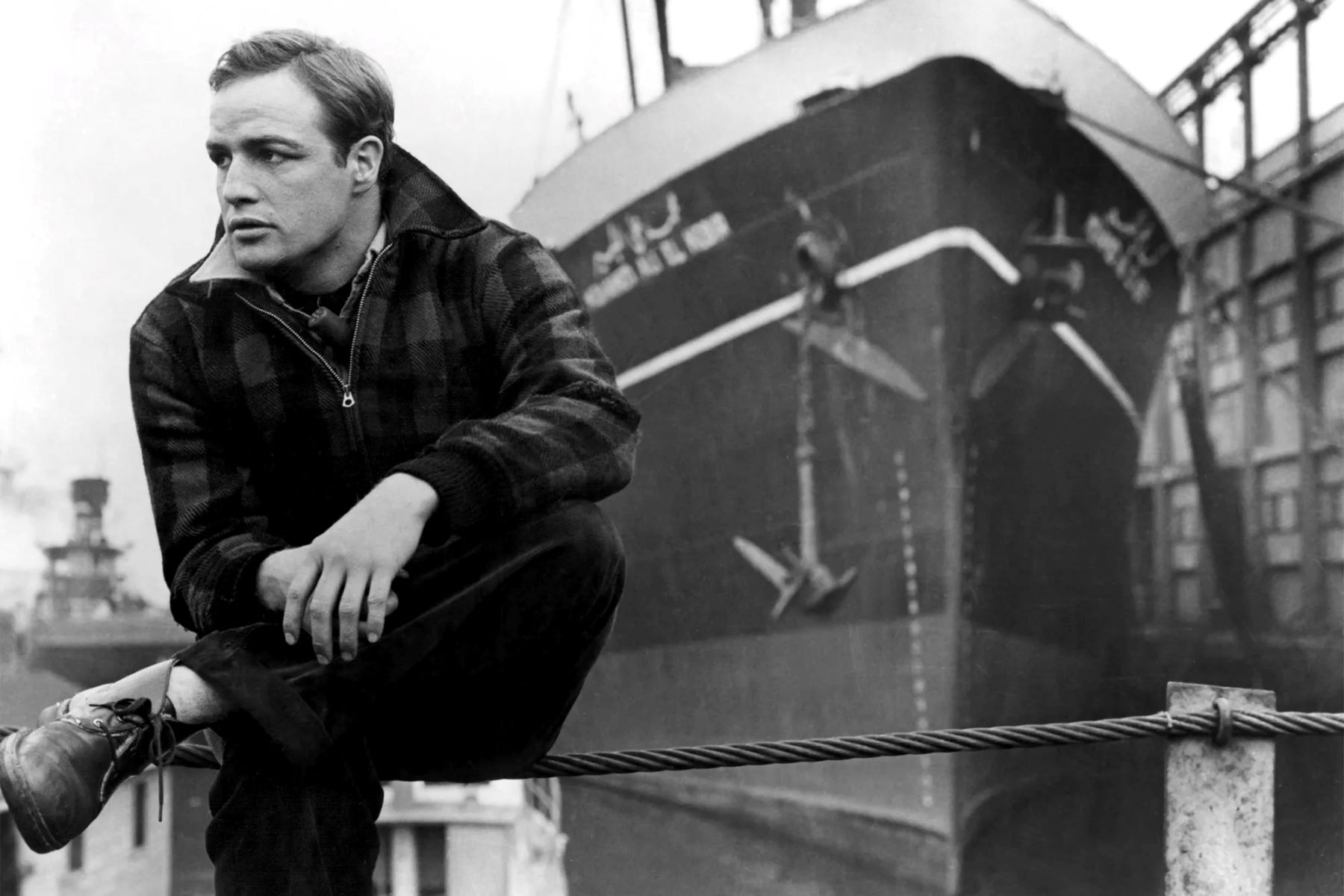Home>Arts and Culture>The Surprising Reason Behind Roy Orbison’s Iconic Sunglasses
Arts and Culture
The Surprising Reason Behind Roy Orbison’s Iconic Sunglasses
Published: January 27, 2024
Discover the fascinating story behind Roy Orbison's iconic sunglasses and their impact on arts and culture. Explore the surprising reason that led to this enduring symbol of the legendary musician.
(Many of the links in this article redirect to a specific reviewed product. Your purchase of these products through affiliate links helps to generate commission for Regretless.com, at no extra cost. Learn more)
Table of Contents
Introduction
Roy Orbison, the legendary American singer-songwriter, is celebrated for his remarkable contributions to the world of music. His hauntingly powerful voice and poignant lyrics have left an indelible mark on the music industry, earning him a revered status among fans and fellow musicians alike. While Orbison's musical prowess is widely recognized, there is a fascinating aspect of his persona that has piqued the curiosity of fans for decades – his iconic sunglasses.
These trademark sunglasses, often described as "black, thick-framed, and mysterious," became synonymous with Orbison's enigmatic image. They not only added a layer of intrigue to his stage presence but also became an integral part of his identity. The story behind these sunglasses is as captivating as the man who wore them, delving into the intersection of fame, tragedy, and personal expression.
In this article, we will delve into the captivating tale of Roy Orbison's iconic sunglasses, exploring the profound impact they had on his image and the surprising reason behind their inception. From his rise to fame to the tragic loss that led to the birth of this iconic accessory, we will unravel the layers of this compelling narrative, shedding light on the profound significance of a seemingly simple fashion choice.
Join us on a journey through the life and legacy of Roy Orbison, as we uncover the intriguing story behind the sunglasses that became synonymous with one of music's most enduring icons.
Roy Orbison's Rise to Fame
Roy Orbison's ascent to musical stardom is a tale of unwavering passion, resilience, and unyielding talent. Born in Vernon, Texas, in 1936, Orbison's early years were marked by a deep-seated love for music. His journey into the spotlight began with a fervent pursuit of his musical aspirations, fueled by an innate gift for songwriting and an ethereal vocal range that would eventually captivate audiences worldwide.
In the late 1950s, Orbison's career gained momentum as he ventured into the realm of rock and roll, a genre that would become synonymous with his name. His distinctive voice, often described as operatic in its emotive power, set him apart in an era dominated by rockabilly and rhythm and blues. Orbison's breakthrough came with the release of "Only the Lonely," a melancholic masterpiece that showcased his unparalleled vocal prowess and emotional depth. This marked the beginning of his meteoric rise to fame, earning him the moniker "The Caruso of Rock."
As Orbison's repertoire expanded to include timeless classics such as "Crying," "In Dreams," and "Oh, Pretty Woman," his status as a musical luminary solidified. His haunting ballads resonated with audiences on a profound level, transcending the confines of popular music to carve a niche of their own. Orbison's ability to convey raw emotion through his music garnered widespread acclaim, propelling him to the forefront of the industry.
Amidst the whirlwind of success, Orbison's stage presence became a focal point of fascination. His enigmatic aura, coupled with his soul-stirring performances, captivated audiences around the globe. It was during this pivotal phase of his career that the seeds of an enduring fashion statement were sown, setting the stage for the emergence of his iconic sunglasses.
As Orbison's star continued to ascend, his influence reverberated across the musical landscape, leaving an indelible imprint on generations of artists to come. His journey from a young dreamer in Texas to a revered figure in the annals of music is a testament to the transcendent power of artistic expression and the enduring legacy of a true visionary.
Roy Orbison's rise to fame not only showcased his exceptional musical talent but also laid the foundation for a legacy that continues to resonate with audiences today. His unwavering commitment to his craft and his ability to evoke profound emotions through his music cemented his status as an icon, setting the stage for the next chapter in his extraordinary story.
The Tragic Loss of Roy Orbison's Vision
Amidst the zenith of his musical career, Roy Orbison confronted a devastating loss that would profoundly shape his personal and professional trajectory. In the early 1960s, Orbison endured a harrowing tragedy when his vision was tragically compromised. During a tour in the UK, a tragic mishap with a faulty handgun led to a life-altering accident, causing a severe injury to Orbison's left eye. The repercussions of this fateful incident transcended the realms of physical impairment, casting a profound shadow over Orbison's life.
The aftermath of the accident left Orbison with limited vision in his left eye, a constant reminder of the profound upheaval he had endured. The impact of this loss reverberated through every facet of his existence, posing formidable challenges to his daily life and reshaping his perception of the world around him. Despite the adversity he faced, Orbison's resilience and unwavering spirit remained unyielding, propelling him to forge ahead in the face of adversity.
The loss of his vision imbued Orbison's music with an even deeper sense of poignancy, infusing his performances with an unparalleled depth of emotion. His haunting ballads, already renowned for their evocative power, now bore the poignant imprint of his personal struggle, resonating with audiences on a profound level. Orbison's ability to channel his inner turmoil into his music elevated his artistry to unprecedented heights, solidifying his status as a luminary in the music industry.
Despite the challenges posed by his impaired vision, Orbison's determination and artistic vision remained unshaken. His indomitable spirit served as a testament to the resilience of the human spirit, inspiring countless individuals facing their own adversities. Through his unwavering commitment to his craft, Orbison transcended the limitations imposed by his physical condition, leaving an enduring legacy that continues to captivate audiences to this day.
The tragic loss of Roy Orbison's vision stands as a poignant chapter in the narrative of his life, underscoring the profound impact of adversity on the human experience. It serves as a testament to Orbison's remarkable fortitude and unwavering dedication to his art, illuminating the transformative power of resilience in the face of adversity. This pivotal moment in Orbison's journey laid the groundwork for the emergence of an enduring symbol that would come to define his enigmatic persona – his iconic sunglasses.
The Birth of Roy Orbison's Iconic Sunglasses
Following the profound loss of his vision, Roy Orbison found himself navigating a world forever altered by the absence of visual clarity. It was amidst this transformative period that the genesis of his iconic sunglasses took shape, marking a pivotal moment in the evolution of his public persona. Orbison's decision to don his trademark sunglasses stemmed from a deeply personal space, transcending mere fashion to become a symbol of resilience, mystique, and unwavering determination.
The sunglasses, with their distinctive black, thick-framed design, served as more than a mere accessory; they became a shield, a conduit through which Orbison could navigate the complexities of his altered reality. Behind the enigmatic facade of those dark lenses lay a narrative of perseverance and a testament to the indomitable human spirit. Orbison's choice to embrace these sunglasses was not merely a stylistic preference but a profound statement of defiance against the limitations imposed by his impaired vision.
In the public eye, the sunglasses became synonymous with Orbison's identity, shrouding him in an aura of captivating enigma. They shielded his gaze from the outside world, offering a sanctuary within which he could channel his emotive performances without the constraints of self-consciousness. The sunglasses became a visual metaphor, encapsulating the dichotomy of vulnerability and strength that defined Orbison's artistic journey.
As Orbison took to the stage, the haunting melodies of his music intertwined with the enigmatic allure of his sunglasses, creating a mesmerizing tapestry of sound and image. The juxtaposition of his ethereal voice and the inscrutable barrier of the sunglasses captivated audiences, drawing them into a realm where the boundaries between sight and sound blurred into a seamless, transcendent experience.
The birth of Roy Orbison's iconic sunglasses marked a transformative juncture in his career, elevating his public image from that of a revered musician to a timeless cultural icon. Beyond the realm of music, the sunglasses became an emblem of resilience, a visual testament to the triumph of the human spirit over adversity. They embodied the essence of Orbison's unwavering determination and served as a poignant reminder of the profound impact of his personal journey on his artistic expression.
In the annals of music history, the emergence of Roy Orbison's iconic sunglasses stands as a testament to the transcendent power of personal symbolism, encapsulating the profound intersection of artistry, identity, and resilience. It is a testament to the transformative potency of a seemingly simple fashion choice, etching an indelible mark on the legacy of a true visionary.
The Impact of Roy Orbison's Sunglasses on His Image
The enigmatic allure of Roy Orbison's iconic sunglasses transcended the realm of mere fashion, leaving an indelible imprint on his public image and cultural legacy. These seemingly simple accessories became a defining element of his persona, shaping the perception of audiences and fellow musicians alike.
Orbison's decision to don his trademark sunglasses imbued his image with an air of captivating mystery, elevating his stage presence to an iconic status. The stark contrast between the dark, impenetrable lenses and his emotive performances created a mesmerizing dichotomy, drawing audiences into a realm where the boundaries between sight and sound blurred into a seamless, transcendent experience. The sunglasses became a visual metaphor, encapsulating the depth and complexity of Orbison's artistic identity.
Beyond their stylistic significance, the sunglasses served as a shield, offering Orbison a sanctuary within which he could channel his emotive performances without the constraints of self-consciousness. They provided a sense of security, allowing him to navigate the complexities of his altered reality with a newfound sense of confidence and poise. In this way, the sunglasses became an integral part of his artistic expression, enabling him to transcend the limitations imposed by his impaired vision and connect with audiences on an even deeper emotional level.
The impact of Orbison's sunglasses extended far beyond the confines of the stage, permeating popular culture and leaving an indelible mark on the collective consciousness. Their enigmatic allure became synonymous with Orbison's enigmatic persona, solidifying his status as a timeless cultural icon. The sunglasses served as a visual emblem of resilience, a testament to the triumph of the human spirit over adversity, inspiring generations of fans and fellow artists.
In the annals of music history, the impact of Roy Orbison's sunglasses on his image stands as a testament to the transcendent power of personal symbolism. They encapsulated the profound intersection of artistry, identity, and resilience, etching an indelible mark on the legacy of a true visionary. As the curtains fell on each performance, the enigmatic silhouette of Roy Orbison, adorned with his iconic sunglasses, lingered in the collective memory, a poignant reminder of the enduring power of artistic expression and the transformative potency of a seemingly simple fashion choice.
Conclusion
In the tapestry of music history, the story of Roy Orbison's iconic sunglasses emerges as a poignant testament to the profound interplay of personal resilience, artistic expression, and cultural legacy. From the depths of tragedy arose an enduring symbol that transcended the confines of fashion, encapsulating the indomitable spirit of a true visionary.
The journey of Roy Orbison, from a young dreamer in Texas to a revered figure in the annals of music, is a testament to the transcendent power of artistic expression. His haunting ballads, imbued with raw emotion and poignant lyricism, continue to resonate with audiences, transcending the boundaries of time and space. Amidst the zenith of his career, the loss of his vision posed formidable challenges, reshaping his perception of the world and infusing his music with an even deeper sense of poignancy.
The genesis of Orbison's iconic sunglasses, born from the crucible of personal adversity, became a visual emblem of resilience and defiance. Behind the enigmatic facade of those dark lenses lay a narrative of perseverance and a testament to the indomitable human spirit. They transformed his public image, elevating his stage presence to an iconic status and permeating popular culture with their enigmatic allure.
Beyond their stylistic significance, the sunglasses became a conduit through which Orbison could navigate the complexities of his altered reality, transcending the limitations imposed by his impaired vision. They provided a sanctuary, enabling him to channel his emotive performances with newfound confidence and poise, captivating audiences with the mesmerizing dichotomy of sight and sound.
In the annals of music history, the impact of Roy Orbison's sunglasses on his image stands as a testament to the transcendent power of personal symbolism. They became a visual metaphor, encapsulating the depth and complexity of Orbison's artistic identity and solidifying his status as a timeless cultural icon. As the curtains fell on each performance, the enigmatic silhouette of Roy Orbison, adorned with his iconic sunglasses, lingered in the collective memory, a poignant reminder of the enduring power of artistic expression and the transformative potency of a seemingly simple fashion choice.
The story of Roy Orbison's iconic sunglasses serves as an enduring testament to the transformative potency of personal symbolism, etching an indelible mark on the legacy of a true visionary. It stands as a poignant reminder of the enduring power of artistic expression and the profound impact of personal resilience on the human experience, leaving an indelible imprint on the collective consciousness and inspiring generations to embrace the enigmatic allure of their own journeys.













